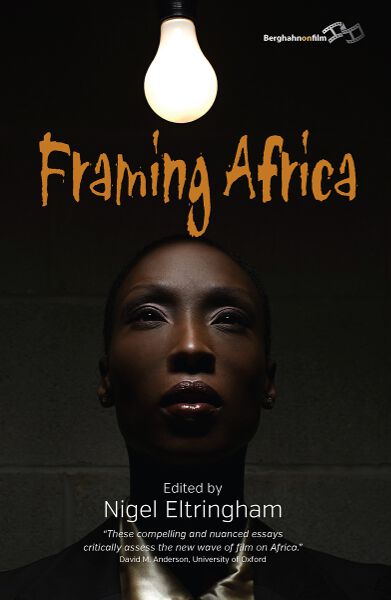The perception of Africa through the lens has certainly changed since the films of the 1950s. That change in the way viewers see Africa in twenty-first century film is the topic of Framing Africa: Portrayals of a Continent in Contemporary Mainstream Cinema, published in June 2013. Below, the collection editor Nigel Eltringham discusses the changing frame of Africa in mainstream cinema.
_______________________________________________________

In November 2004, I attended the annual meeting of the African Studies Association in New Orleans. A flier inserted into the conference programme invited participants to a private screening of a new film, Hotel Rwanda, at a small arts cinema nearby.
After the showing, Terry George, the director, explained that this was a ‘low budget’ film ($17.5 million) that may only get a limited release (at that point there was no UK distributor), and that with a minimal publicity budget, ‘We depend on word-of-mouth to spread the word on this movie.’
I was surprised, therefore, when three months later the billboard next to my local train station in south London displayed a six-metre-long machete announcing the general release of the film and its three Oscar nominations. The film appeared to have come a long way by word-of-mouth.
Given the research I had conducted in Rwanda, I was invited two years later by Channel 4 News (UK) to be interviewed about the release of another film about the Rwandan Genocide, Shooting Dogs (renamed Beyond the Gates in North America). This interview and the constant question from friends and colleagues of ‘What do you think of these films?’ led to a short essay on Shooting Dogs published in 2008. But, it occurred to me that other scholars familiar with African contexts in which feature films had been set would be being asked the same question.
That was where the idea for Framing Africa originated: what do those with specialist knowledge of a context think of its portrayal on the big screen?
Framing Africa is also propelled by the particular nature of the films set in Africa that have been released since 2000. In the second half of the previous century, one can discern three dominant phases in mainstream, English-speaking, North American portrayals, and European cinematic portrayals of Africa.
First, Africa provided the context for narratives of heroic ascendancy over self (The African Queen 1951, The Snows of Kilimanjaro 1952), military odds (Zulu 1964, Khartoum 1966) and nature (Mogambo 1953, Hatari! 1962, Born Free 1966, The Last Safari 1967). Attention then turned to retrospective consideration of colonial life, with an emphasis on decay, decadence and race (Out of Africa 1985, White Mischief 1987). Cry Freedom (1987) appeared to herald a different engagement with the continent as the amorphous ‘Africa’ of recurring exotic caricatures (landscape and wildlife) gave way to the brutal specifics of Apartheid South Africa.
But, since 2000, the cinematic Africa of the 1980s has been reversed. Where Cry Freedom was an impassioned attempt to educate the world about Apartheid, South Africa’s story of redemption is now extracted from ‘Africa’ (Red Dust 2004; Invictus 2009) while the rest of the continent is no longer a place of romance between Danish Baronesses and British big-game hunters (Out of Africa 1985), but is blighted by transnational corruption (The Constant Gardener 2005), genocide (Hotel Rwanda 2004, Shooting Dogs 2006), ‘failed states’ (Black Hawk Down 2001), illicit transnational commerce (Blood Diamond 2006) and the unfulfilled promises of decolonization (The Last King of Scotland 2006). Whereas once Apartheid South Africa (Cry Freedom 1987, A Dry White Season 1989) was the foil for the romance of East Africa, a redeemed South Africa has now become the foil for violence in the rest of the continent and it is for this reason that Red Dust (2004) and Invictus (2009) are included within Framing Africa.
The same relationship applies to other films that could have been included that promote a redeemed South Africa (Goodbye Bafana 2007; In My Country 2006) in contrast to rampant violence elsewhere (Tears of the Sun 2003; Sometimes in April 2005; Lord of War 2005; Darfur 2009). One of the questions that propel Framing Africa is whether this post-2000 group of films has been able to move away from the Heart of Darkness cliché of Africa as a violent canvas against which European heroism is enacted.
All of the contributors to Framing Africa draw on long-term engagement with specific African contexts to explore the relationship between a film, historical or anthropological knowledge of the context and local perspectives. Further, the contributors reflect on the relation of these films to other contemporary forms of ‘western’ knowledge about Africa (news media, documentary, academic commentary and fiction literature) to consider continuities and discontinuities with other portrayals of Africa. The contributors consider these questions from their particular location as both members of the primary, intended (non-African) audience for these films and as scholars with extensive, specialist knowledge of the contexts portrayed.
As such, Framing Africa is a timely reflection on the contemporary place Africa holds in the North American and European imagination.
________________________________________________
Nigel Eltringham is Senior Lecturer in the Department of Anthropology at the University of Sussex. He has published extensively on the aftermath of the 1994 Rwandan genocide, conducting research in Rwanda, among the Rwandan diaspora in Europe and at the International Criminal Tribunal for Rwanda (Arusha Tanzania).
